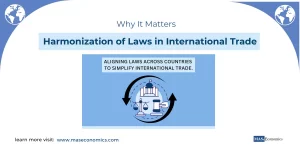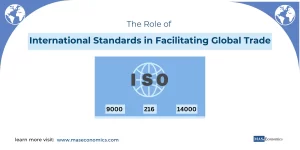In today’s globalized world, countries are more interconnected than ever before. This interconnectedness has led to a surge in bilateral and multilateral trade agreements, which help foster economic cooperation and create opportunities for growth and development across borders.
Bilateral and multilateral trade agreements offer pathways for countries—particularly those in developing regions—to leverage economic partnerships for domestic growth. They can be powerful tools for improving small and medium-sized enterprises (SMEs) and enhancing trade prospects. However, these agreements can also come with challenges, such as power imbalances between the partnering countries. A notable example of bilateral cooperation is the China–Pakistan Economic Corridor (CPEC), while China’s Belt and Road Initiative (BRI) is a prime example of multilateral collaboration.
In this blog, we will explore both types of trade agreements and their implications for countries of varying economic sizes.
What is a Bilateral Agreement?
A bilateral trade agreement is a trade deal between two countries that aims to improve their economic relations. These agreements are often easier to negotiate since they involve fewer parties, allowing countries to focus on strengthening their relationship with a single partner. When both countries share similar political, economic, and social structures, it becomes easier to cooperate efficiently and achieve mutual benefits.
China–Pakistan Economic Corridor (CPEC) is a prime example of a bilateral trade agreement with far-reaching economic implications. Launched in 2016, the project aims to enhance trade routes and boost cooperation between China and Pakistan. With a $62 billion investment, CPEC focuses on infrastructural development, agricultural cooperation, and trade facilitation, which has already started reducing Pakistan’s dependency on neighboring states.
What are Multilateral Trade Agreements?
Multilateral trade agreements involve more than two countries and are broader in scope. These agreements aim to promote economic cooperation and globalization on a larger scale. Multilateral agreements, like those governed by the World Trade Organization (WTO), are designed to create a level playing field for all participating nations, although reaching a consensus can be challenging.
An example of this is China’s Belt and Road Initiative (BRI), a massive multilateral initiative involving over 140 countries that seeks to enhance global trade by investing in infrastructure projects across Asia, Africa, and Europe. China aims to strengthen economic ties with participating countries, though some poorer nations have expressed concerns about the long-term impact of this cooperation.
Key Differences Between Bilateral and Multilateral Trade Agreements
While both types of agreements are beneficial depending on the context, the key differences lie in their scope and complexity:
Bilateral Agreements:
- Involve just two countries.
- Easier and faster to negotiate.
- Tend to focus on specific issues or sectors.
- Offer targeted benefits, particularly for smaller countries that need more focused trade policies.
Multilateral Agreements:
- Involve multiple countries, making negotiations more complex.
- Promote broad economic globalization.
- This can lead to “free-riding,” where some countries benefit more than others without equally contributing to the agreement.
Multilateralism fosters broader economic cooperation but can result in slower progress due to the complexity of aligning multiple countries’ interests. On the other hand, bilateral agreements are more straightforward but may limit the overall scope of benefits to just the two participating nations.
Advantages and Challenges of Bilateral and Multilateral Agreements
Advantages of Bilateral Agreements
- Simplicity and Speed: Bilateral agreements are typically quicker to negotiate, allowing countries to address specific trade needs in a timely manner.
- Mutual Focus: Countries can concentrate on specific issues, ensuring both parties benefit equally.
Challenges of Bilateral Agreements
- Limited Scope: While efficient, bilateral agreements are often limited to the two countries involved, missing out on larger, more diverse trade opportunities.
- Power Imbalances: In some cases, the more powerful country in a bilateral agreement can dominate the terms of trade, potentially exploiting the weaker partner.
Advantages of Multilateral Agreements
- Economic Globalization: Multilateral agreements encourage broader economic cooperation and can result in more comprehensive trade benefits.
- Increased Market Access: These agreements allow countries to access a larger, more diverse array of markets and trading partners.
Challenges of Multilateral Agreements
- Free-Riding: Some countries may benefit disproportionately without contributing their fair share, leading to uneven benefits across participants.
- Complex Negotiations: Reaching consensus between multiple countries can be difficult, with lengthy negotiations and compromises required.
Why Trade Agreements Matter for Economic Growth
Trade agreements, both bilateral and multilateral, play a crucial role in driving economic growth. SMEs in developing countries often benefit significantly from these agreements, as they provide access to new markets, technology transfers, and capital investments from more developed countries.
However, it is essential to approach these agreements with caution. If not structured equitably, bilateral and multilateral agreements can widen economic disparities, with wealthier nations dominating trade benefits.
Balancing Growth and Fairness
Participating countries must carefully negotiate terms to ensure that these agreements promote growth while also maintaining fairness. Both bilateral and multilateral agreements need to consider the needs of all parties involved, especially smaller economies that may lack the bargaining power of wealthier nations.
Conclusion
Bilateral and multilateral trade agreements are powerful tools for fostering economic growth, enhancing cooperation, and opening up new markets. While bilateral agreements allow for more focused and efficient cooperation between two countries, multilateral agreements encourage broader economic collaboration, promoting globalization and economic stability.
However, both types of agreements come with their own sets of challenges, from power imbalances in bilateral deals to complex negotiations in multilateral agreements. Ultimately, the success of any trade agreement depends on its ability to create fair opportunities for all parties involved.
FAQs:
What is the difference between bilateral and multilateral trade agreements?
Bilateral trade agreements involve two countries working to enhance economic ties and focus on specific sectors or issues, while multilateral trade agreements involve multiple countries aiming for broad economic cooperation on a global scale.
Why are bilateral trade agreements easier to negotiate?
Bilateral agreements are easier to negotiate because they involve only two countries, allowing for focused discussions on specific mutual interests without the complexities that arise from aligning multiple countries’ goals.
What are some advantages of bilateral trade agreements?
Bilateral agreements offer simplicity, speed, and the ability to address targeted trade issues effectively. They allow countries to negotiate terms that can benefit both parties directly and can often be tailored to meet the specific needs of each country.
How do multilateral trade agreements promote economic globalization?
Multilateral agreements foster global cooperation by connecting multiple economies, thereby increasing market access and enhancing opportunities for trade and investment across a wide range of countries.
What are the challenges associated with multilateral trade agreements?
Challenges include complex and lengthy negotiations, the risk of “free-riding” where some countries benefit without contributing equally, and the difficulty of achieving consensus among diverse economies with varying interests.
How do trade agreements impact small and medium-sized enterprises (SMEs)?
Trade agreements open new markets for SMEs, allowing them to access larger customer bases and benefit from technology transfer and investments, which can drive growth and innovation within the local economy.
Why is balancing growth and fairness important in trade agreements?
Ensuring fair terms in trade agreements helps prevent economic disparities, allowing smaller or developing economies to benefit alongside wealthier nations. Fairly structured agreements promote sustainable growth for all parties involved.
How can power imbalances affect bilateral trade agreements?
In bilateral agreements, the more powerful country may have the leverage to negotiate terms that primarily serve its interests, potentially disadvantaging the weaker partner, especially in areas like tariffs and market access.
Thanks for reading! Share this with friends and spread the knowledge if you found it helpful.
Happy learning with MASEconomics




